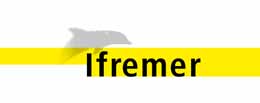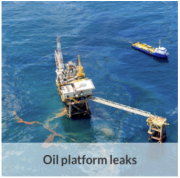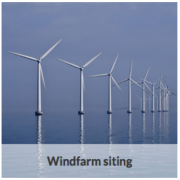Horizontal velocity of the water column (currents)
Type of resources
Topics
Keywords
Contact for the resource
Provided by
Formats
Representation types
Update frequencies
status
Resolution
-

This HF radar system is composed by two CODAR Seasonde antennas (transmit frecuency 4.525 MHz) and offers many benefits for the Basque Operational Oceanography Network such as: the improvement of the knowledge about surface currents and their forcing physical processes, marine safety, search and rescue, pollution response, validation and calibration of both hydrodynamic and pollutant drift forecasting models, data assimilation on progress, etc. The access from raw radial data to processes 2D surface current is provided for scientific and applied purposes (Coastal processes, marine safety, search and rescue, pollution response, etc).
-

Surface current data measured by the CNR-ISMAR HF radar network are made available in graphical format for the last 48 hours and in real time and delayed mode via a THREDDS catalog which provides metadata and data access. The web site gives information on HF radar technology, sites position and operational parameters, and links to the THREDDS catalog. The catalog offers different remote-data-access protocols such as Open-source Project for a Network Data Access Protocol (OpenDaP), Web Coverage Service (WCS), Web Map Service (WMS) (OGS standards), as well as pure HTTP or NetCDF-Subsetter. They allow for metadata interrogation and data download (even sub-setting the dataset in terms of time and space) while embedded clients, such as GODIVA2, NetCDF-JavaToolsUI and Integrated Data Viewer, grant real-time data visualization directly via browser and allow for navigating within the plotted maps, saving images, exporting-importing on Google Earth, generating animations in selected time intervals. The data on the THREDDS catalog are organized in two folders, collecting the hourly current files of the last five days and grouping all the historical data. The two folders are accessible both in aggregated and in non-aggregated configuration. The data set consists of maps of radial and total velocity of the sea water surface current collected by the HF radars within the Italian Coastal Radar Network established in the framework of the Italian flagship project RITMARE. Surface ocean velocities estimated by HF Radar are representative of the upper 0.3-2.5 meters of the ocean. The radar sites are operated according to Quality Assessment procedures and data are processed for Quality Control. Data access tools are compliant to Open Geospatial Consortium (OGC), Climate and Forecast (CF) convention and INSPIRE directive. The use of netCDF format allows an easy implementation of all the open source services developed by UNIDATA.
-

HF Radar System
-

HF Radar System
-

COSYNA provides near real-time data from integrated observations and model results. The observations comprise a variety of in situ techniques (e.g. FerryBox, Gliders, Cabled Underwater Observatories) as well as remote sensing from shore by radar and from space by satellite. Key physical, sedimentary, geochemical and biological parameters are observed at high temporal resolution in the water column and the upper and lower boundary layers. COSYNA’s modelling part consists of nested models with different grid sizes for hydrography (salinity, waves, currents), for suspended matter and for biogeochemical and ecosystem processes. Sophisticated data assimilation procedures, i.e. continuous corrections of the models by observations, improve the reliability of now-casts and short-term forecasts. All data and plots are generally available for download through the data portal (http://codm.hzg.de/codm/). FerryBox data can be directly accessed via the data portal ferrydata.hzg.de where different vizualizaton tools are available (e.g. single transect, pool data along a certain transect for a longer time period or time-series at certain locations). Furthermore, all datasets can be exported in ASCII (tab separated tables) or NetCDF format and downloaded. COSYNA’s motivation is bridging the gap between operational oceanography and the various users of forecasts of the marine state. For further outreach to stakeholders and the wider community an app has been developed for the most common platforms.
-

The MONICAN web page provides access to real-time or archived measurements and operational forecasts of the oceanographic conditions prevailing in the Nazare Canyon area of influence. Near real-time measurements in the Nazare Canyon area are collected hourly by the MONICAN network. This network includes two multi-parametric platforms measuring waves, meteorogical parameters (wind, atmospheric pressure, air temperature and relative humidity), sea surface temperature and (for one of the platforms) water temperature in the upper 200m and currents in the upper 100m. The MONICAN network also integrates two coastal tidal stations providing sea surface level measurements in the ports of Nazare and Peniche , and one coastal meteorological station providing meteorological measurements in the area of Ferrel. The near real-time data is presented in graphical form (namely by combining observations and forecasts) and can be accessed in table form. Forecasts of the wave conditions affecting the coast of Nazare are also included.
-
-

-

-
 Catalogue PIGMA
Catalogue PIGMA